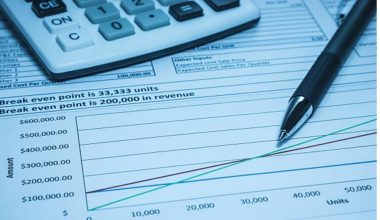Changes in financial instruments or interest rates occur in basis points (BPS). It’s a good idea to comprehend the fundamentals of basis points (BPS). To a great extent, they influence your interest rates, either as an investor or a borrower. If you are an investor, you’ll keep an eye on your portfolio to monitor the yield. On the other hand, if you are a borrower, you’ll know what led to the rise or fall in your interest rates. Either way, the bottom line is, you really do need to understand how basis points (BPS) work as well as how to convert them into percentages or vice versa using a calculator.
What Are Basis Points?
In finance, the simple units of measurement used to assess percentages and interest rates are called basis points (BPS). For investments like treasury bonds, real estate investment trusts, mutual funds, or exchange-traded stocks, basis points reveal the percentage change in financial ratios or interest rates. BPS is also used by the financial sector, accountants, banks, and mortgage providers. In addition to portfolio managers and investors, insurance firms also use BPS in describing annuity costs and interest rate spreads. Generally, they point out changes in a financial instrument’s value or interest rate. On a general note, 1 basis point is equal to 1/100th of 1%, or 0.01%. However, one basis point appears as 0.0001 (0.01/100) in decimal.
There’s a relationship between percentage changes and basis points. Using the basis points calculator, we represent these changes as follows: 1% change = 100 BPS. Likewise, 0.01% change= 1 basis point. As small as this may seem, can translate to large amounts of dollars.
Understanding BPS
To clearly understand this, see basis point as the fraction of a percent. Generally, bonds and loans are stated in basis point terms. Analysts and investors also use BPS to determine interest rates, stock indices, and fixed income security yields. And just in case you are yet to understand what a basis point is all about, Investopedia defines it as the basis move between two percentages or the spread between two interest rates. There’s something spectacular about BPS. It records small changes, usually very narrow, but these can outrightly lead to a significant outcome.
So if you hear something like “a bond increased by 50 BPS,” it simply means the bond increased by 0.50%.
How Do Basis Points Work In Mortgages?
Changes in basis points affect your monthly mortgage payments depending on the type of mortgage you have. If the mortgage rate you are using is an adjustable-rate mortgage (ARM), then your interest rate can increase or decrease. The good thing about an ARM is that your monthly mortgage rate can decrease. Unfortunately, it recorded more increases than decreases because of the variable factors in our environment and the economy.
So if you have an ARM of 4.8% and after 20 months, you receive a notification that 20 BPS have been added to your monthly rate, what’s the implication?
20 BPS = 0.2%. Add this to your 4.8% and it equals 5% rate per month. It appears small, but take a look at the following: 0.2% of $700,000 is $1400. So your $33,600 payment increases to $35,000 as a result of BPS rise.
How Can I Avoid BPS and Interest Rise in Mortgage Rates
The best way to beat the incessant interest rise, or should I say interest hike, is to lock up your rate. Although mortgage providers will convince you otherwise, ARM records more increases than decreased rates.
Which Financial Instruments Use Basis Points to Measure Percentages?
The following are some of the financial products that uses basis points to calculate percentages;
- Equity securities
- Corporate bonds
- Credit derivatives
- Treasury bonds
- Interest rates
- Debt securities
- Options and futures
How Do Annuity Providers Use Basis Points?
Annuity providers use BPS in three ways. The first is determining the changes in the index when subtracting the spread, indicating the rise in annuity rates, and expressing the difference between two or more interest rates.
First, annuity providers utilize BPS to calculate the change in the index and deduct the spread to determine the interest that should be credited to an indexed annuity with a rate spread. Secondly, they are also used to indicate small changes in annuity rates. Furthermore, annuity providers use it to show the variance of two or more interest rates.
How Do Investors Use Basis Points?
Most investors use basis points in the following ways,
- Communicating the prices of exchange-traded funds as well as mutual funds
- Expressing the changes in the value of assets
- Investors also use BPS to compare certain fund fees and expenses.
Despite just being one-hundredth of a percentage point, BPS always has a significant financial impact on institutions and people. This is evidently why investors are mindful even while watching it play out.
Can Basis Points be Negative?
Yes, BPS can be negative. If it happens with your ARM mortgage rates, then it’s a win-win for you and a loss for your mortgage lender, who always anticipates an interest. Sadly, the reverse is the case in terms of financial instruments. For financial instruments, it usually creates two angles. The first is that of the investor, who will count it as an opportunity to go into the market. And the second is the investor whose yield has just been reduced by a certain degree.
Why Does a 1/100th of a Percent Difference Matter?
1/100 sounds like a minute fraction that should be overlooked, right? A hundredth of a percent may not seem like much, but over the course of a mortgage, loan, or financial instrument, it may add up to tens of thousands of dollars. Something as little as a 30 basis point (BPS) over a long term can be a significant amount.
Basis Points to Percentage
You can convert your Basis points to percentages using either of the following ways;
#1. Convert Basis Point to Decimal
The first way of converting basis point to percentages is to first convert them to decimal. You can quickly and easily convert basis points into decimals by multiplying them by 0.0001, as one basis point is equal to 0.0001 as a decimal.
So if a lending institution gives you a loan with an interest rate of 400, for instance, how do you change it to decimal and then to percentage using this means? Simply multiply 400 by 0.0001 to get the percentage rate. ( 400 X 0.0001 = 0.04) Simply multiply your answer by 100. 0.04 X 100 + 4%. The lending institution gave you the loan at a 4% interest rate.
#2. Divide Basis Point (BPS) Number By 100
The second way of converting basis points to percentages is to divide your BPS by 100. This method is actually more straightforward than the first.
How Can I Convert Percentage to Basis Points?
To convert your percentage to basis points (BPS), all you have to do is simply multiply the given number of percentage by 100.
For examples, treasury bills increased by 5%. If you want to convert it to basis point (BPS), multiply 5 by 100. 5 X 100= 500 basis points (BPS).
Basic Rules on Basis Points Conversion
The table below, contains the basic rules for any basis point (BPS) conversion
| BASIC RULES | CONVERSION |
| Divide basis point (BPS) by 100 | To change basis points (BPS) to percentage |
| Divide the decimal by 0.0001 | To convert decimal to basis point (BPS) |
| Multiply percentage by 100 | To change percentage to basis points (BPS) |
| Multiply basis points (BPS) by 0.0001 | To convert basis point (BPS) to decimal |
Basis Points Calculator
Converting basis points (BPS), percents, decimal numbers, and permille values is much easier with the BP calculator. All you have to do is to enter one number; the rest will be calculated automatically on the basis points calculator.
Features of an Online Basis points Calculator
The following are the features of an online BPS calculator
- Basis points column
- Percentage
- Decimal
- Permiles- not available in every BPS online calculator
Best Online BPS Calculator
The following are some of the best online BPS Calculator
- Omni BPS calculator
- Online Calculator guru
- Ezcal BPS calculator
- Calculator online BPS
- BY JY’s Online calculator
- Money hub
- Good calculator
How do I calculate basis points?
Conversion of a percentage to a basis point. As a rule of thumb, one percent is equal to one hundred basis points. As a result, we can easily convert a percentage into a basis point by multiplying it by 100.
How many basis points is 200 %?
Basis Point(s) is a way of measuring the distance between percentage points using a base of 100.
Is 25 basis points the same as 25 %?
Basis points, also known as bps or “bips,” are a unit of measurement used in finance to express changes in an index or other benchmark that are expressed as a percentage of the change in the value of financial instruments. One basis point is equal to 0.001 in decimal form or 0.01% (1/100th of a percent).
What percent is 400 basis points?
For instance, 400 basis points would be saved if you could obtain a 30-year fixed mortgage at 4%. That rate is now 4.05% if market conditions change and rates increase by 5 basis points.
How many basis points is 100 percent?
The following points increase incrementally to 100%, or 10000 basis points,
How much is 99 basis points?
The first 99 basis points are the decimal values between 0.01 and 0.99. The percentage is 1 percent, or 100 basis points, or 1.00.
How many basis points is 40%?
What is the value of 40 basis points? In decimal form, 40 basis points are equal to 0.4%, or 0.004. Because 1 basis point equals 0.01%, this is true.
How are basis points paid?
As previously mentioned, a basis point equals one hundredth of a percentage point. As a result, 100 basis points are equal to 1%. On the other hand, one discount point is equal to 1% of the loan balance. For instance, one point on a $200,000 mortgage would equal $2,000 in total.
Conclusion
Basis point (BPS) mostly occurs in a small percentage, but then, there’s a need to understand how this affects your interest rate as a borrower or your yield as an investor. It can be likened to a little yeast that leavens an entire dough. This means it is mostly small but has a significant result.
Basis Points FAQs
How do basis points affect mortgage rates?
If the interest rate on any mortgage increases by 250 BPS, it equals a 2.5% increase. If the BPS drops by 100, then it means there’s a 1% decrease in the mortgage rate.
When is base point mostly used?
Generally, we see BPS when differences are less than 1. For instance, you can represent 0.5% as 50 BPS






